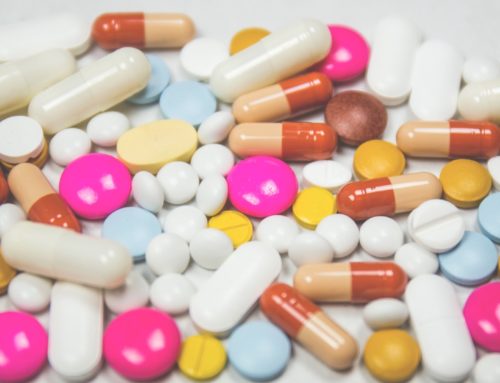The eternal daily struggle to stay hydrated…tell me about it!
While we’re all (hopefully) aware of the important role water plays in regulating the various functions that take place within our bodies, it can be surprisingly challenging to ensure we’re staying on top of our hydration needs.
A study from 2002 found that even after controlling for other factors such as lifestyle, diet, and exercise, people who drink 5 or more glasses of water per day, had about a 50% lower risk of dying from heart disease, compared to those who drank 2 or less (1).
While adequate water intake is associated with all good things, such as improved digestion, positive mental health, clear skin, and overall better quality of life, there are some serious issues that can arise from not getting enough of this super liquid.
A body that’s regularly dehydrated is likely to present symptoms such as general fatigue, low blood pressure, headaches, muscle cramps, and poor skin quality — with the risk of organ failure on the extreme end of the spectrum (2).
Alright, so it’s highly important that we’re drinking enough water. What’s lesser known, however, is that hydration isn’t just about how much you drink, it’s also about how well your cells are to maintain their hydrated state. Well, if you clicked on this article, you may be pleased to know that while hydrated cells are necessary, getting 100% of your water from a cup is not.
This is very good news for us bad water drinking humans, and you might be surprised to know that you’re probably already getting around 20% of your daily hydration from the foods you eat — potentially more if you tend to eat a good range of different fresh fruits and vegetables!
There are even benefits to eating your water over drinking it, and science shows that due to the structure of water-rich foods, and the nutrients contained within them, H2O molecules are more readily able to be not only absorbed by the body but subsequently processed in a way that enables them to be retained for longer (3).
Alas! Look for no further for your healthy guide to eating your water, just keep in mind that the scientific stats that follow refer exclusively to these foods in their raw forms, and that cooking — depending on what methods are being used — will inevitably have an impact on the absorbable water content.
12 Ways To Eat Your Water For Those Who Are Bad At Drinking It:
- Celery
This vegetable not only aids in weight loss due to its low number of calories and extremely high water content (95%), but it also contains key nutrients that may help in the inhibition of cancer cell growth and the strengthening of weak bones.
Science suggests that vitamin K deficiency — a molecule found in particularly concentrated quantities in celery— may have a role in preventing the development of osteoporosis, with an increase of even 5mg of vitamin K, per day, resulting in a greater than 50% reduction in clinical bone-fractures (4, 5).
Other compounds present within this vegetable, namely luteolin and apigenin, have been extensively linked with inhibition of pancreatic and breast cancer, respectively, and only go to bolster the health benefits of this lean, green, disease-fighting machine (6).
2. Watermelon
With a 92% water content, it’s no surprise where this sweet treat gets its name. A single cup serving of watermelon contains around one half-cup of H2O, with an assortment of antioxidants and C and A vitamins, to boot.
One antioxidant called lycopene — the same one found in other red fruits such as tomatoes, papayas, and grapefruit, but, interestingly enough, notcherries or strawberries — is shown to be highly effective in fighting cancer and preventing cardiovascular disorders of all types (7).
Fun Fact: The distinctive aroma watermelon is easily recognized for is a result of enzymatic reactions that occur when the fruit is cut into and fatty acids become oxidized. What’s more, is that it’s one of the most widely studied scents in the world due to it being notoriously difficult to artificially replicate.
3. Carrots
Carrots are over 90% water in addition to being one of the best sources of a compound called beta-carotene — with 100 grams of cooked carrots providing approximately 8,279 micrograms (mcg) of the stuff.
When the human body receives beta-carotene, it reacts by converting it into vitamin A. Further to this, research has linked vitamin A supplementation during pregnancy to the direct prevention of allergic diseases in offspring, providing fascinating implications for the food where sensitivity reactions are concerned (8).
Whilst adequate water intake is vital in order to support various functions such as proper digestion, healthy skin, and sustained energy levels, the beta-carotene found in carrots plays a key role in the maintenance of mucus membranes within the body, making this food a double-whammy of moisture-related benefits, so to speak.
4. Radishes
Many people are surprised to find out that radishes are actually classified as a cruciferous plant, making them an especially healthful addition to any salad, sandwich, or snack time! Check out my article What Chopping Your Vegetables Has To Do With Fighting Cancer for more information on the subject of sulforaphane and the importance of cruciferous foods.
At 95% water by composition, these uber hydrating root vegetables are known for their spicy kick, which actually triggers a series of effects within the body that leads to a decrease in inflammation and provides an over-all cooling effect due to alleviation of excess heat (9).
5. Strawberries
The water content of strawberries comes in at 91%, making this flavourful and antioxidant-rich berry the most hydrating of its kind.
Strawberries contain a wide variety of micro-nutrients that contribute to their high nutritional quality, including folate, manganese, and phenolic substances known for their antioxidant and anti-inflammatory action, with research suggesting additional, indirect antimicrobial, anti-allergy, and anti-hypertensive properties (10, 11).
In fact, in the largest conclusive analysis of risk factors for death and disease conducted in all of history, the 2010 Global Burden of Disease Study found that a diet low in the consumption of dark and red berries was a factor with one of the highest rates of success in predicting outcomes related to disease (12).
6. Cauliflower
Lucky for us, cauliflower clocks in with a 92% water content, and offers a diverse spectrum of eating opportunities — think anything from cauli-rice, to “chicken” wings, to the creamy base of a healthy soup or sauce!
A single cup serving of this vegetable offers over 1/4 cup of water, plus an added 3.5 grams of fibre to keep you fuller for longer. Cauliflower is also a great source of choline, which is an essential nutrient required by the body for the maintenance of proper health.
In a research study of individuals deprived of dietary choline, around 77% of men, and 80% of postmenopausal women saw the development of organ dysfunction — aka fatty liver and/or muscle damage — as a result, highlighting the sheer importance of this nutrient. Incorporating extra choline into your diet has, fortunately, been shown to provide long term beneficial effects on memory, helping you remember to drink your water, and eat it, too (13)!
7. Zucchini
Zucchini has a pretty high content of H2O, meaning, most importantly, that those delicious raw zucchini noodles are actually 95% water! — who knew you could make water taste so Italian?!
One cup serving of this vegetable fulfills around 35% of our total vitamin C requirement for the day, protecting the immune system and playing an important role in many vital processes within the body, such as the conversion of the amino acid tryptophan, to the neurotransmitter responsible for happiness, known as serotonin.
In addition, vitamin C acts as a powerful antioxidant, thus contributing to a decrease in damage from free radicals present within our environment, and directly aiding in the modulation of diseases such as atherosclerosis, types of cancer, and neurodegenerative problems (14).
8. Eggplant
As a low-calorie food and a great source of viscous fibre, this plant containing 89% water by volume is an optimal inclusion in any healthy eating plan.
Eggplants provide the body with nutrients such as copper, manganese, potassium, as well as B and K vitamins, too, and boasts added advantages where the metabolic function is concerned, due to this vegetable’s ability to stimulate bile production and reduce the absorption of cholesterol in the intestines (15).
Asresult of eggplant’s hypocholesterolemic properties, more recent research suggests promising applications of the extract of this food in the ethnomedicinal treatment of diabetes and high cholesterol (16).
9. Potatoes
Although potatoes come in around 80% total water content, certain types are more hydrating than others, with a darker colour and waxy varieties beating out your typical russet, any day of the week!
If you enjoy the taste of the skins, make sure to keep those on, too, as that’s where the highest concentration of the potato’s potassium can be found.
In 2010, the Dietary Guidelines for Americans Advisory Committee identified potassium as one of the nutrients most neglected in Western populations, with an increase in potassium intake positive associated with a reduction in blood pressure, and therefore the prevention and risk reversal of heart disease and stroke (17).
10. Cantaloupe
The water content in cantaloupe registers at 90%, with a single cup serving providing over a half-cup of water.
Cantaloupe is also particularly rich in vitamin A, with the same serving size providing an impressive 120% of your daily needs and helping to protect your body against infection by strengthening your immune system, while it’s at it (18)
With a surprising 2 grams of fibre per 177 gram serving, this juicy summer melon will keep you feeling fuller for longer when incorporated into your routine hydration efforts.
11. Peaches
Peaches, like potatoes, provide the greatest health benefits within the body when consumed with their skins, versus without. There exists a growing body of evidence to suggest that the presence of antioxidants found within the fuzzy and nutrient-dense skin of peaches — such as chlorogenic acid — may also aid in the prevention of chronic disease (19).
With a water content of 88%, peaches offer one of the sweetest ways to stay hydrated, boasting added vitamins and minerals like vitamins A, C, and B, as well as potassium.
12. Honorable Mention: Soup!
Although still technically a liquid, soup offers an excellent and more flavourful alternative to drinking your 8 cups of water per day. Made entirely of the vegetables and herbs of your choice added to water, soup is a highly satiating and satisfying method of obtaining a large number of nutrients while staying on the relatively low end of the caloric spectrum.
Want to double or triple the hydrating effects of these foods? Pick a few well-pairing vegetables from this list, add some water, and turn them into a soup!
Alternatively, if you’re in the mood for something sweet, find yourself some hydrating fruit — opt for some coconut water if you’re feeling fancy — and blend together to create a deliciously thirst-quenching smoothie. Enjoy!
Alexandra Walker-Jones — January 2021
Text References:
- Chan J, Knutsen SF, Blix GG, Lee JW, Fraser GE. Water, other fluids, and fatal coronary heart disease: the Adventist Health Study. Am J Epidemiol. 2002 May 1;155(9):827–33. doi: 10.1093/aje/155.9.827. PMID: 11978586.
- Popkin, B. M., D’Anci, K. E., & Rosenberg, I. H. (2010). Water, hydration, and health. Nutrition reviews, 68(8), 439–458. https://doi.org/10.1111/j.1753-4887.2010.00304.
- Popkin, B. M., D’Anci, K. E., & Rosenberg, I. H. (2010). Water, hydration, and health. Nutrition reviews, 68(8), 439–458. https://doi.org/10.1111/j.1753-4887.2010.00304.
- DiNicolantonio, J. J., Bhutani, J., & O’Keefe, J. H. (2015). The health benefits of vitamin K. Open heart, 2(1), e000300. https://doi.org/10.1136/openhrt-2015-000300
- Cheung AM, Tile L, Lee Y et al. . Vitamin K supplementation in postmenopausal women with osteopenia (ECKO trial): a randomized controlled trial. PLoS Med 2008;5:e196 10.1371/journal.pmed.0050196
- Lin, Y., Shi, R., Wang, X., & Shen, H. M. (2008). Luteolin, a flavonoid with potential for cancer prevention and therapy. Current cancer drug targets, 8(7), 634–646.
- Naz, A., Butt, M. S., Sultan, M. T., Qayyum, M. M., & Niaz, R. S. (2014). Watermelon lycopene and allied health claims. EXCLI journal, 13, 650–660.
- Hufnagl K, Jensen-Jarolim E. Does a carrot a day keep the allergy away? Immunol Lett. 2019 Feb;206:54–58. doi: 10.1016/j.imlet.2018.10.009. Epub 2018 Oct 16. PMID: 30339818.
- Liang, H., Wei, Y., Li, R., Cheng, L., Yuan, Q., & Zheng, F. (2018). Intensifying sulforaphane formation in broccoli sprouts by using other cruciferous sprouts additions. Food science and biotechnology, 27(4), 957–962. https://doi.org/10.1007/s10068-018-0347-8
- Afrin S, Gasparrini M, Forbes-Hernandez TY, Reboredo-Rodriguez P, Mezzetti B, Varela-López A, Giampieri F, Battino M. Promising Health Benefits of the Strawberry: A Focus on Clinical Studies. J Agric Food Chem. 2016 Jun 8;64(22):4435–49.
- Giampieri F, Alvarez-Suarez JM, Mazzoni L, Romandini S, Bompadre S, Diamanti J, Capocasa F, Mezzetti B, Quiles JL, Ferreiro MS, Tulipani S, Battino M. The potential impact of strawberry on human health. Nat Prod Res. 2013 Mar;27(4–5):448–55.
- The Global Burden of Disease Study 2010 (GBD 2010)
- Zeisel, S. H., & da Costa, K. A. (2009). Choline: an essential nutrient for public health. Nutrition reviews, 67(11), 615–623. https://doi.org/10.1111/j.1753-4887.2009.00246.x
- Chambial, S., Dwivedi, S., Shukla, K. K., John, P. J., & Sharma, P. (2013). Vitamin C in disease prevention and cure: an overview. Indian journal of clinical biochemistry : IJCB, 28(4), 314–328. https://doi.org/10.1007/s12291-013-0375-3
- Gürbüz N, Uluişik S, Frary A, Frary A, Doğanlar S. Health benefits and bioactive compounds of eggplant. Food Chem. 2018 Dec 1;268:602–610. doi: 10.1016/j.foodchem.2018.06.093. Epub 2018 Jun 20. PMID: 30064803.
- Lans C. A. (2006). Ethnomedicines used in Trinidad and Tobago for urinary problems and diabetes mellitus. Journal of ethnobiology and ethnomedicine, 2, 45. https://doi.org/10.1186/1746-4269-2-45
- Weaver C. M. (2013). Potassium and health. Advances in nutrition (Bethesda, Md.), 4(3), 368S–77S. https://doi.org/10.3945/an.112.00353
- Stephensen CB. Vitamin A, infection, and immune function. Annu Rev Nutr. 2001;21:167–92. doi: 10.1146/annurev.nutr.21.1.167. PMID: 11375434.
- Rossato SB, Haas C, Raseira Mdo C, Moreira JC, Zuanazzi JA. Antioxidant potential of peels and fleshes of peaches from different cultivars. J Med Food. 2009 Oct;12(5):1119–26.





